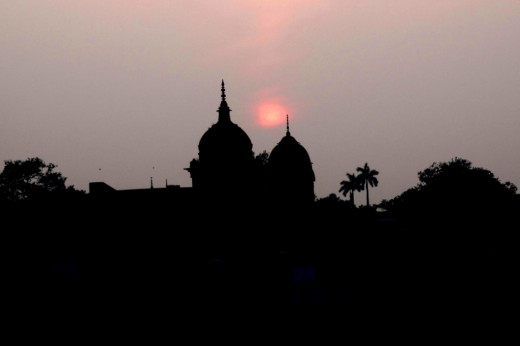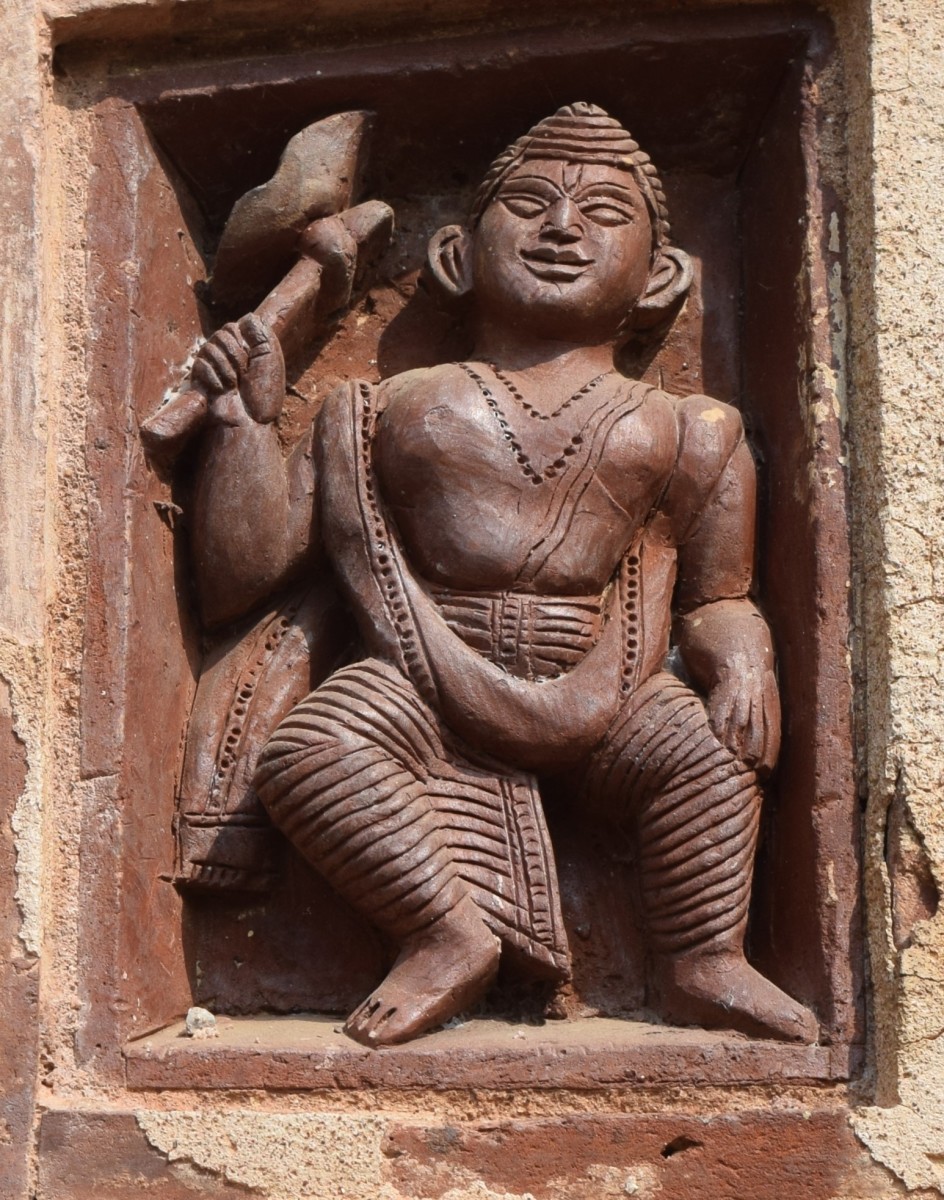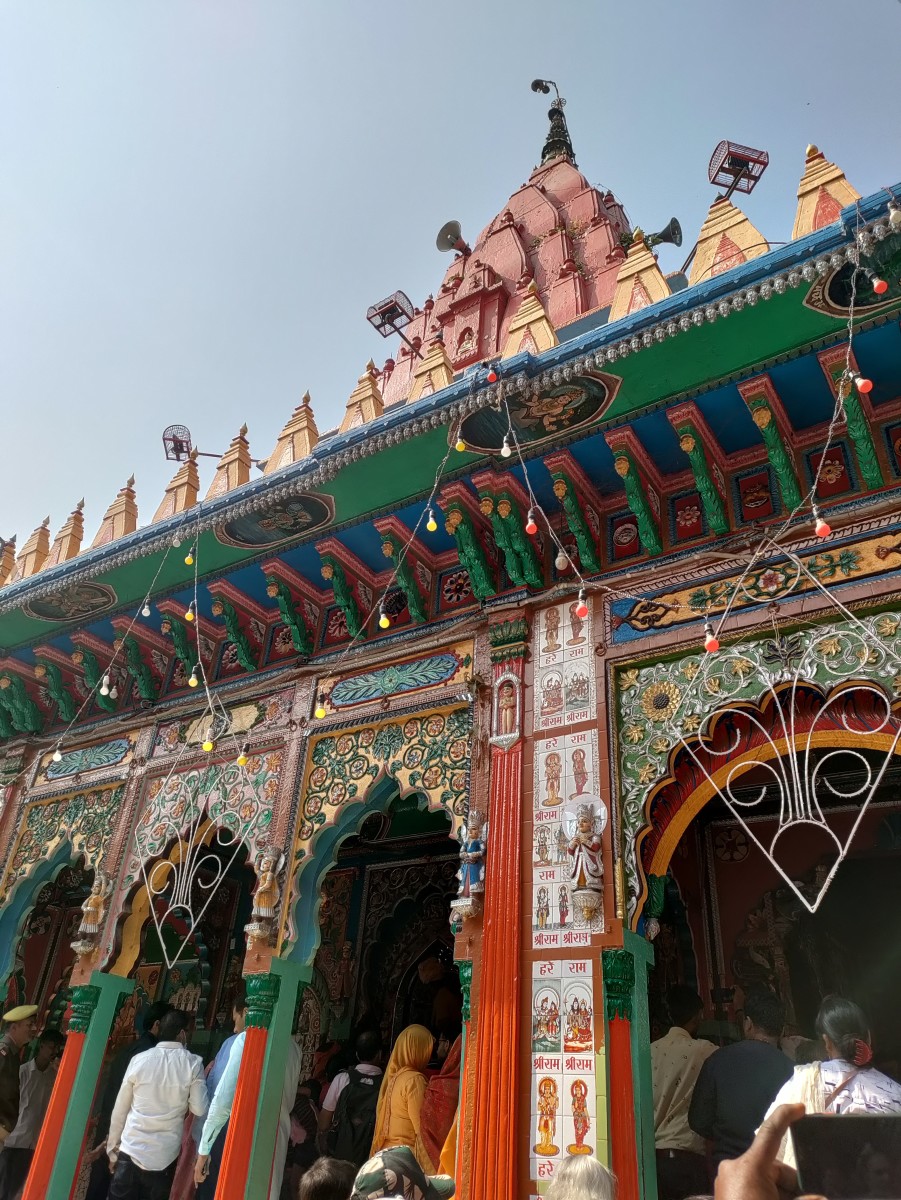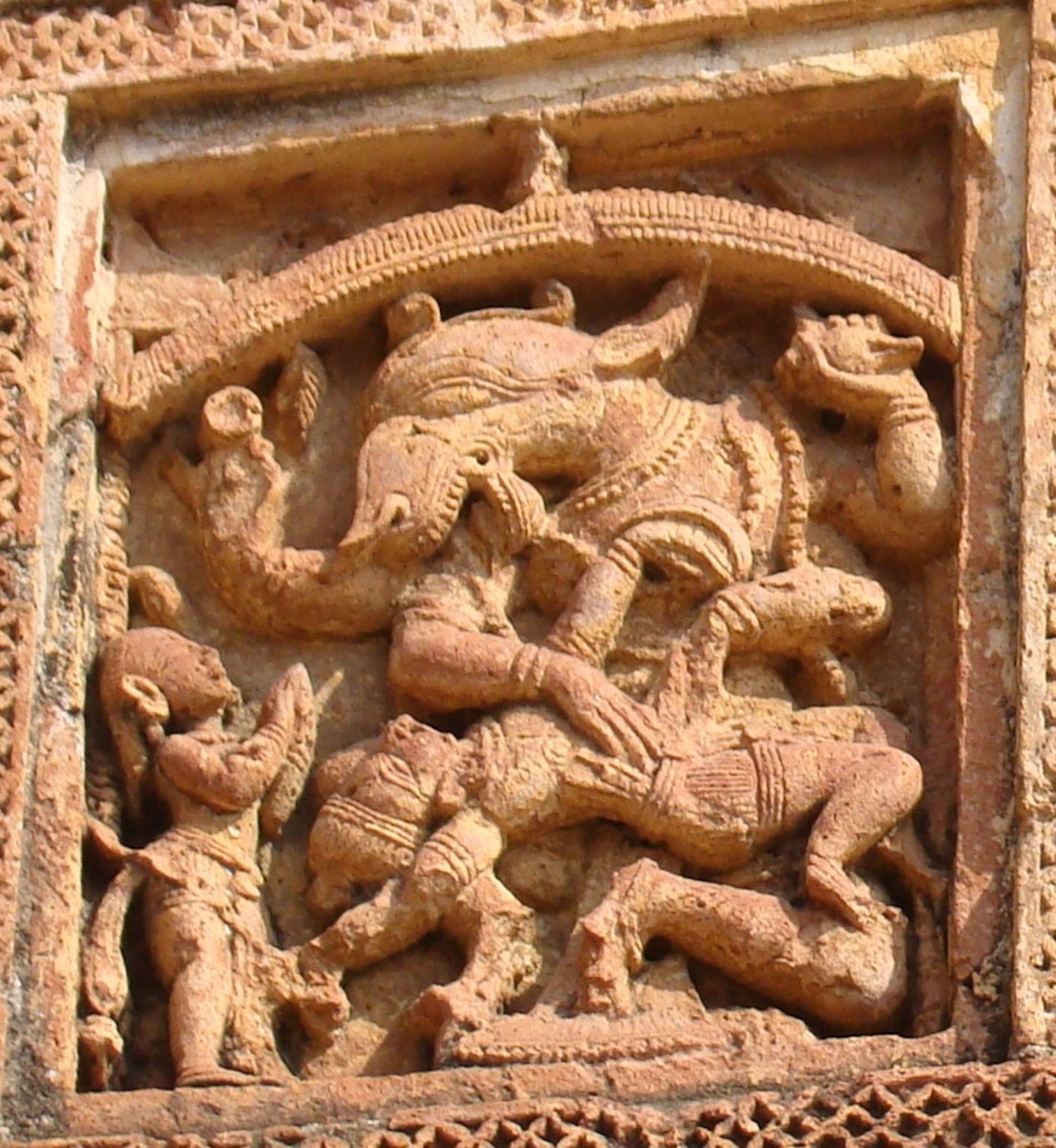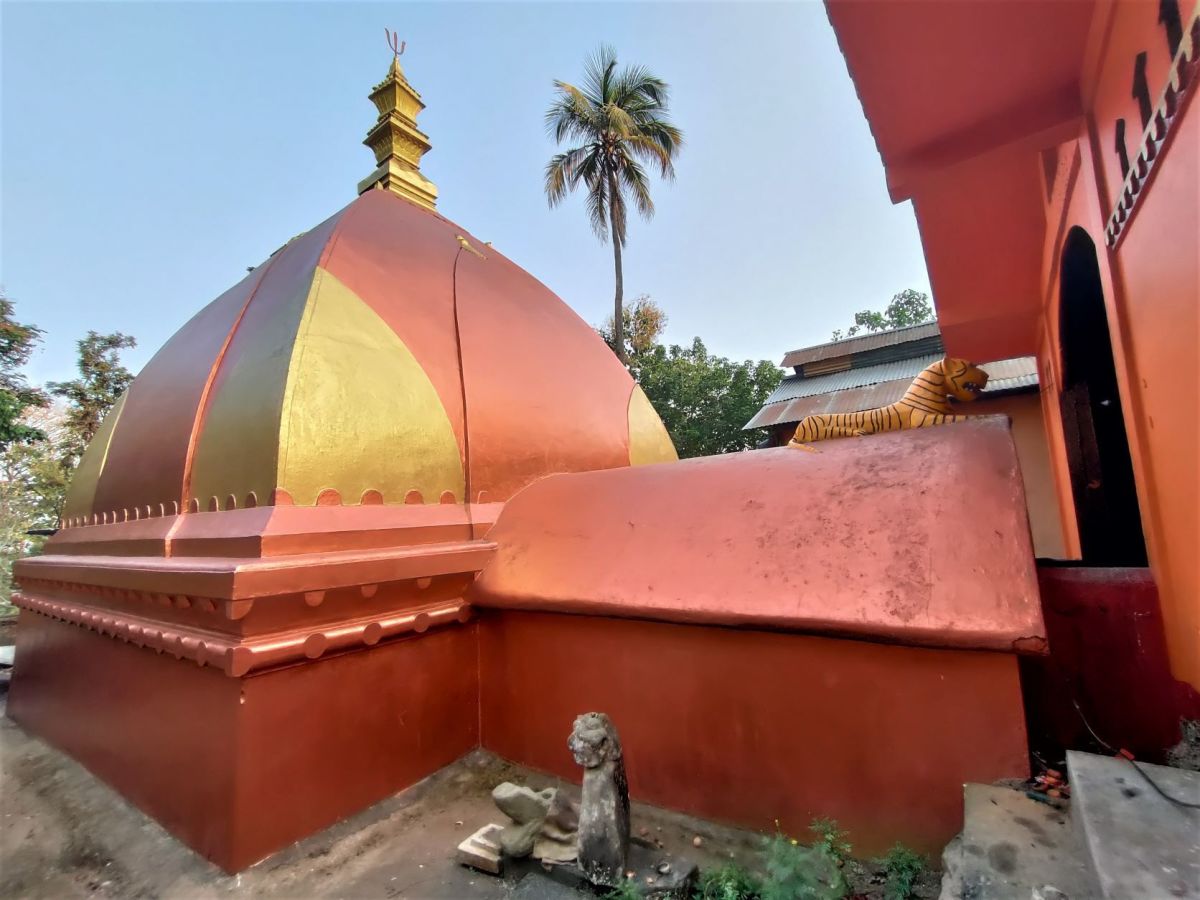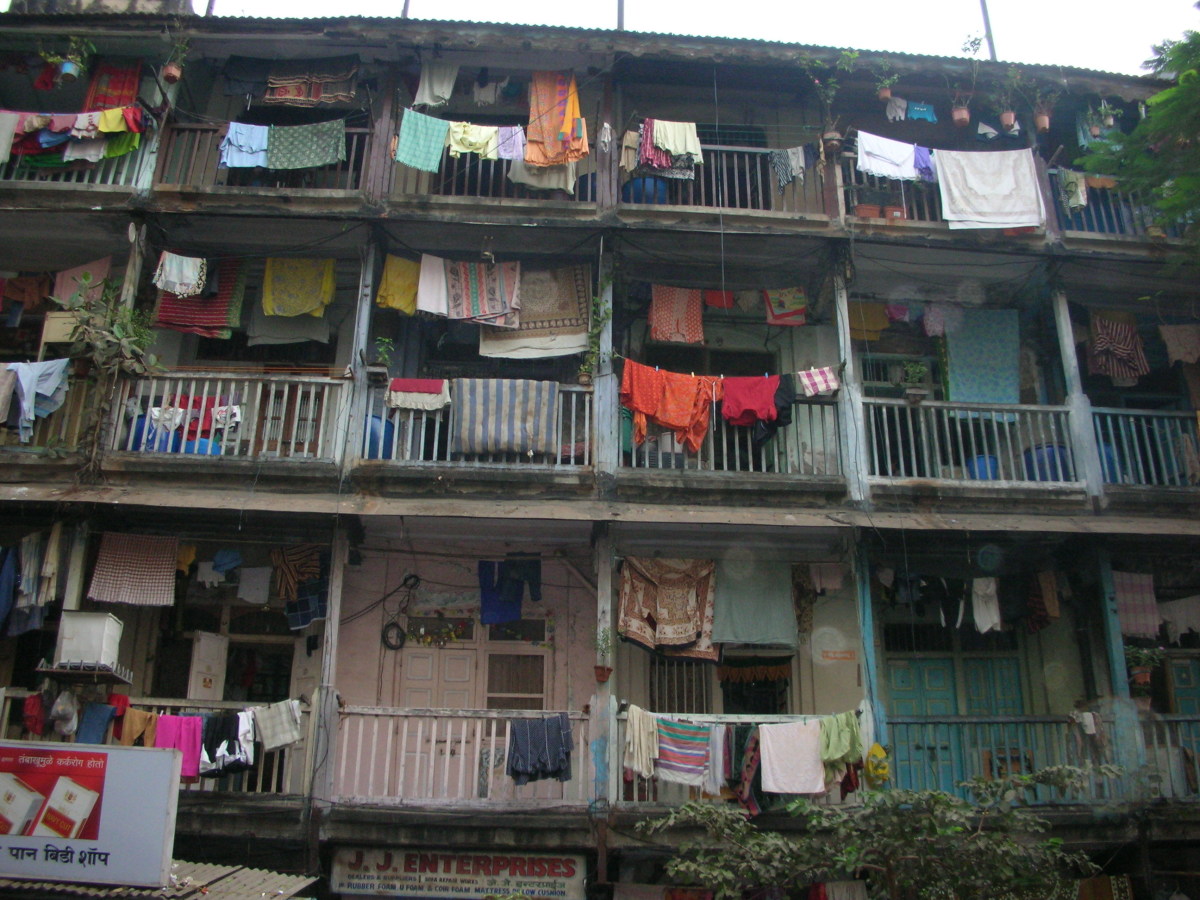- HubPages»
- Travel and Places»
- Visiting Asia»
- Southern Asia
Ayodhya : The city where Lord Rama was born
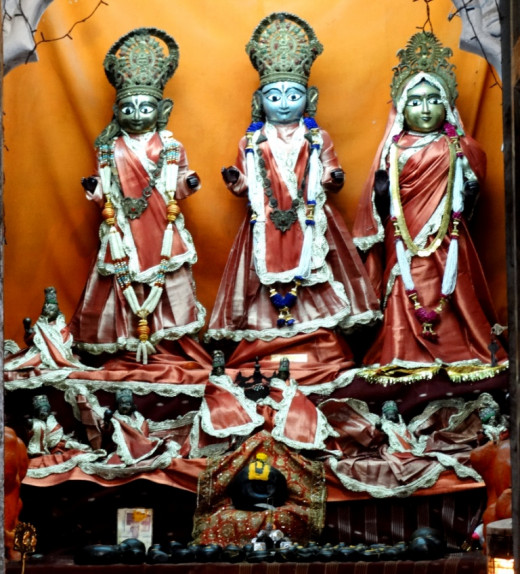
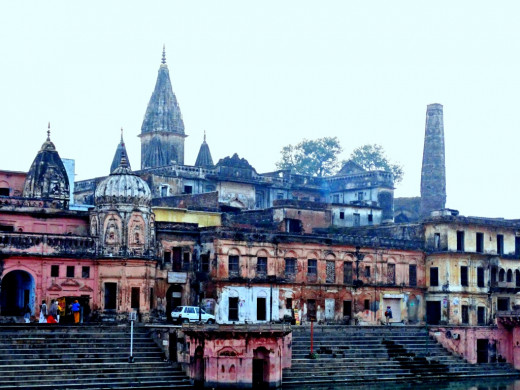
Ayodhya : Introduction
“Jai Shri Ram” (Victory to Lord Rama) – this chanting is in the hearts of billions of Hindu devotees throughout the ages. Lord Rama, the epitome of Virtue & the seventh Avatar of Lord Vishnu is worshiped by millions of Hindus in India & everywhere in the world wherever there are Hindu homes. The Ramayana, one of the two great Indian epics & one of the bests in the world of epics describes the life of Lord Rama. Almost every Indian, Hindu or not, knows something about the Ramayana & about the life of Lord Rama.
Ayodhya or Saket as it was known in the ancient times, is believed to be the birthplace of Lord Rama, & is world famous for this reason or for the controversies about the temple-mosque dispute about the ownership of the birthplace of Lord Rama.
Ayodhya is considered one of the seven sacred cities in India where one can attain salvation (MOKSH-PURI), hence is one of the life-time destinations for the Hindus.
Ayodhya is important to Buddhists & Jains too. Lord Buddha visited this place. Of the twenty four Tirthankars (Great Teachers) of the Jain religion, five were born here. The Sikhs also consider Ayodhya as a holy city. Ayodhya also has a long history of Hundu-Muslim amity.
Considering these, Ayodhya is a very important destination for devotees, pilgrims & tourists in general.
Ayodhya : History
Ayodhya is mentioned as a holy city in the Veda (Atharva Veda described it as a “City Built by the gods & prosperous as the paradise”) & the Purana-s (Skanda & other Purana-s described it as one of the seven sacred cities).
Its first ruling king was Ikshvaku, the son of Vaivaswat Manu of the Suryavansa clan. Down the line, there were great kings like Prithu, Harishchandra, Sagar, Raghu (after whom the clan is known as Raghuvangsa), Dasharath & then Lord Rama (64th in the line).
Later, in the recorded history in the Common Era, when it was known as Saket, it was conquered by the Kushan Emperor Kanishka in 127 CE.
Though the city was known as Ayojjha in Pali language & Ayodhya in Sanskrit during the time of Lord Buddha, its current name was probably firmly established in the 6th century CE.
During the Mughal reign, it was the seat of the Governor of Awadh. During the British rule, it was part of the United Province of Agra & Awadh.
The seven Sacred Cities (Moksh Puri-s)
According to Hindu scriptures, Ayodhya is one of the seven sacred cities (Moksh Puri-s).The others are : Mathura, Kashi (Varanasi), Kanchi (Kanchipuram) , Avantika (Ujjwain), Puri & Dwaravati (Dwarka). Of these, the most important one is Kashi or Varanasi. One can attain salvation (Moksh) in these places.
The seven sacred cities
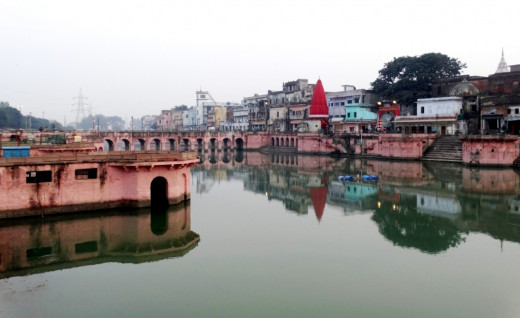
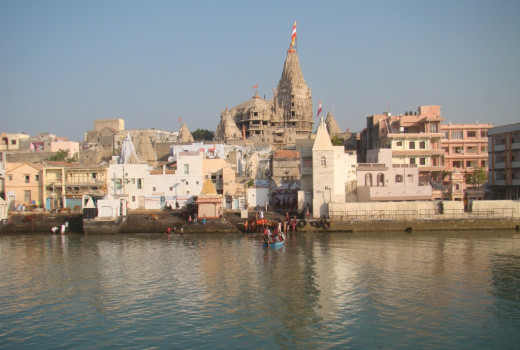
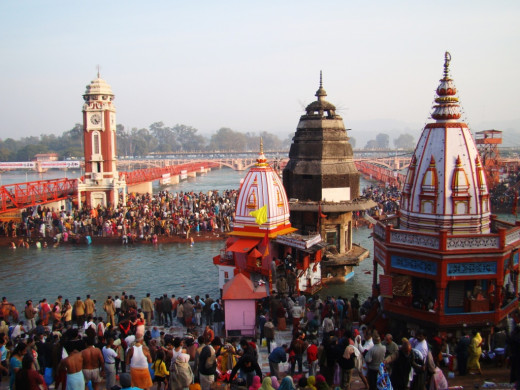
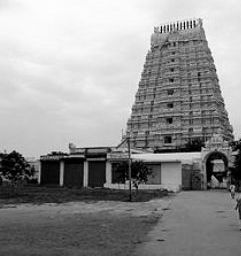
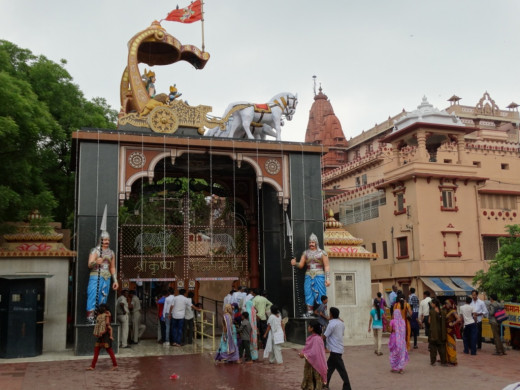
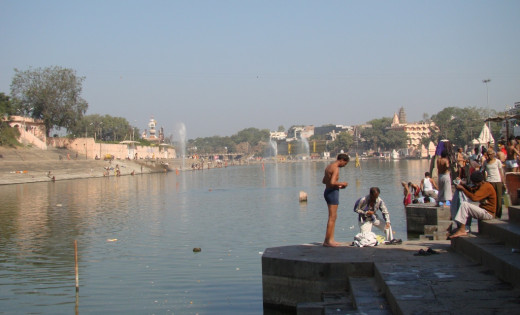
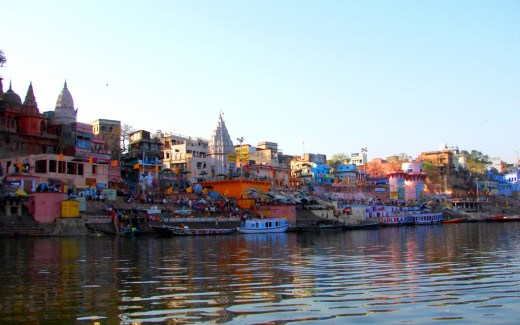
Ayodhya the city
Ayodhya is located on the right bank of the sacred river Sarju or Sarayu, about 6 km from Faizabad in Uttar Pradesh.
Sarayu is a big river, & is believed to be sacred or holy by the Hindus. The city of Ayodhya is a highly congested one with literally thousands of temples. The main temples include the temple of Ramlala (the seat of Ayodhya Controversy), Hanuman Garhi, Kanak Bhawan, Bada Asthan, Nageswarnath Shiva temple, Kaleram temple etc.
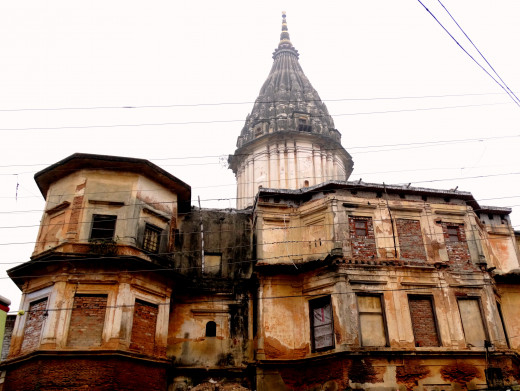
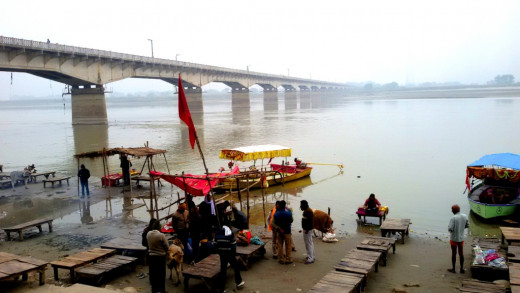
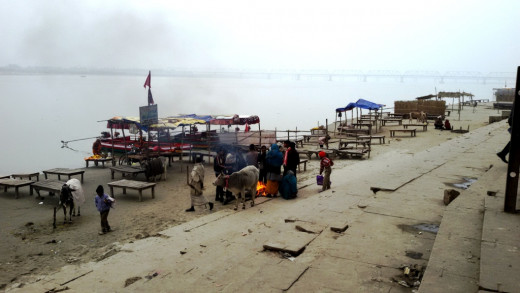
The temple of Ramlala & the Ayodhya Controversy
One cannot evade this topic in a discussion about Ayodhya. A very brief description is being given here .
Ayodhya is believed to be the birthplace of Lord Rama, & it is believed that there was a huge temple at the exact spot where Lord Rama was born. It is also believed that the first Mughal emperor Babur constructed a mosque bearing his name by destroying or converting the temple. There are reports of worshiping by Hindus at the place on a platform known as “Ram Chabutara”. According to the British sources, both Hindus & Muslims used to worship there.
In 1989, the Allahabad High Court opened the locks of the main gate & restored the site for general use. However, the Hindus wanted to build a temple there & did a Shilanyas (inauguration). This sparked disputes between the two communities which escalated for various reasons & ultimately culminated in the destruction of the mosque by Hindu Karsevaks (volunteers) in 1992.
Archaeological findings in 2003
ASI has conducted an excavation at the disputed site & discovered a variety of objects including coins & a huge stone idol of the monkey god Hanuman. ASI concluded that an ancient temple was either demolished or modified to construct the Babri Mosque. It is also said that some Buddhist ruins are also found at the place.
Allahabad High Court verdict in 2010
On 30 September 2010, the Lucknow Bench of the Allahabad High Court gave a verdict on this issue which stated that one third of the disputed land should be given to the Sunni Muslim Central Board of Wakfs, one third to the Nirmohi Akhara & one third to the Hindu party for “Ram Lala”. The Court also ruled that the area where the idol of Lord Rama is present should be given to Hindus, while the rest of the land shall be divided among the three parties (Source : Wikipedia).
The temple of Ramlala (Infant Rama)
This is a make-shift structure in which there is the idol of Ramlala. The area is under extremely tight security (there was a futile terrorist attack here in 2005), & visitors are checked several times & nothing is allowed inside the security cordon. So, photography is out of question.
Hanuman Garhi
It is a massive four-sided fort with a circular bastion at each corner located in the centre of the city. The top of the temple inside is visible from a long distance. The entry is through a huge gate known as Singhadwar (the Lion Gate). Once inside, there are several narrow streets leading to the main temple. There is a long flight of 76 stairs leading to the inner courtyard. Inside, there is a temple housing idols of infant Hanuman with his mother Anjani.
Hanuman Garhi
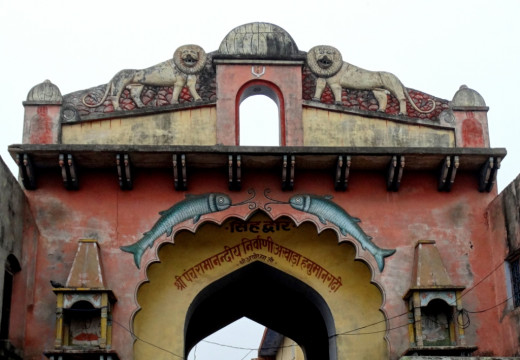
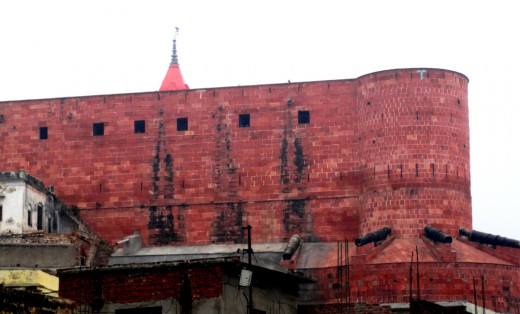
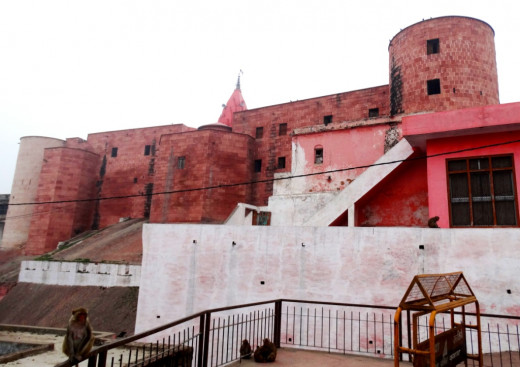
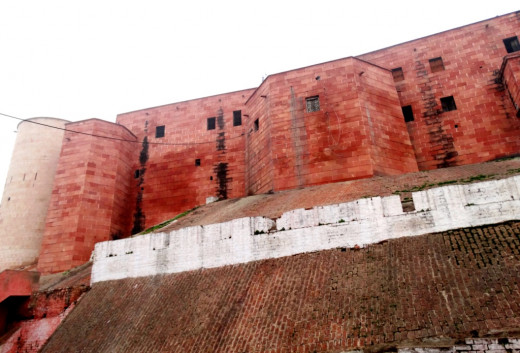
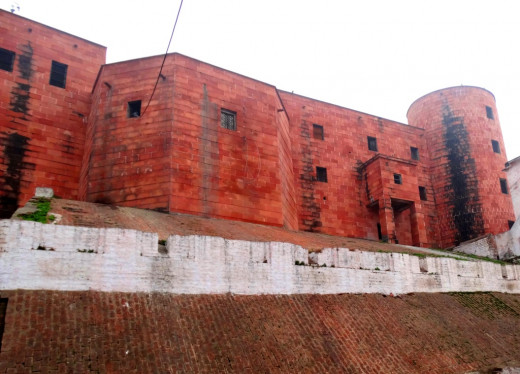
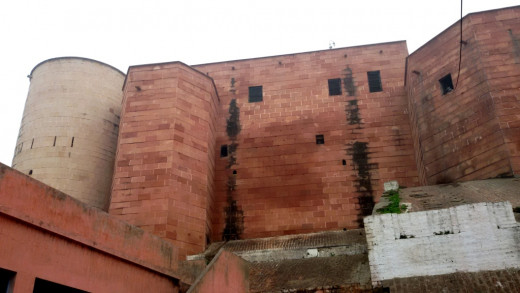
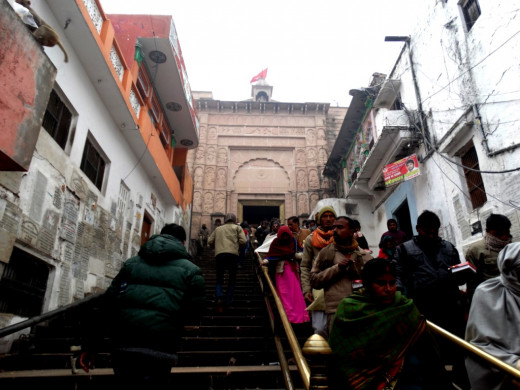
Kanak Bhawan
Literally “Gold Palace”, this beautiful temple is also known as “Sone Ke Ghar” (House of Gold). The present temple was constructed by the queen of Tikamgarh Vrishbhanu Kumari in 1891. Inside, there is a big courtyard with black & white square tiles & several temples. At one side is a small temple with the footprint of Lord Rama on stone. The main temple houses beautiful idols of Sita with Ram & his three brothers.
Kanak Bhawan, Ayodhya
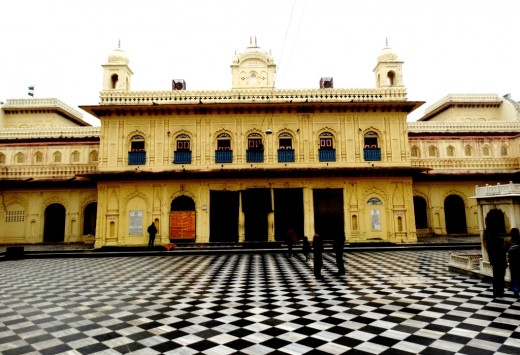
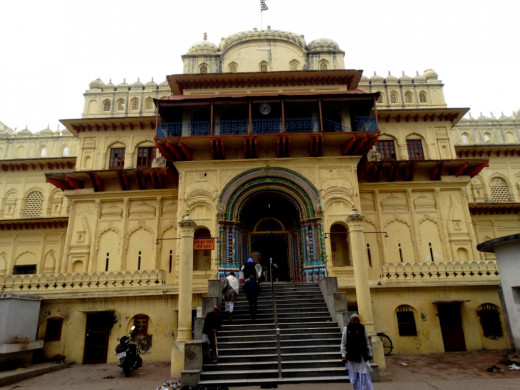
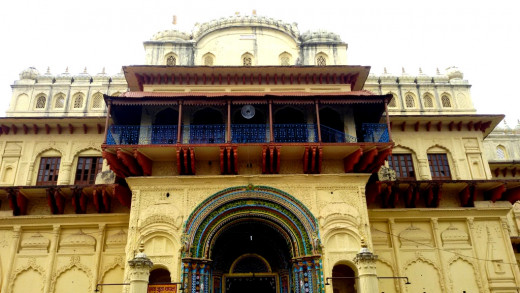
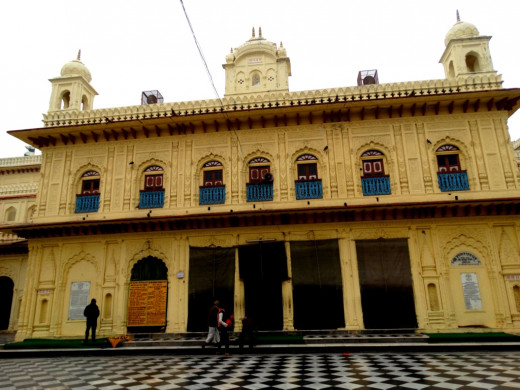
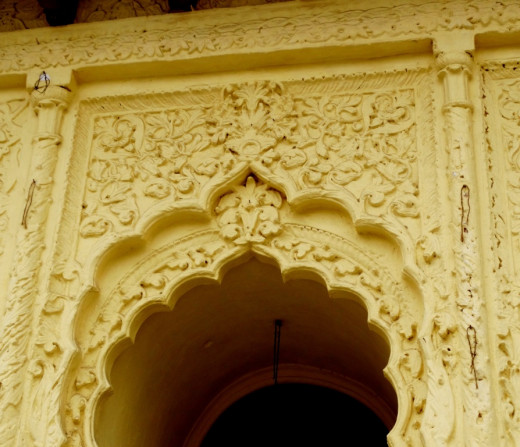
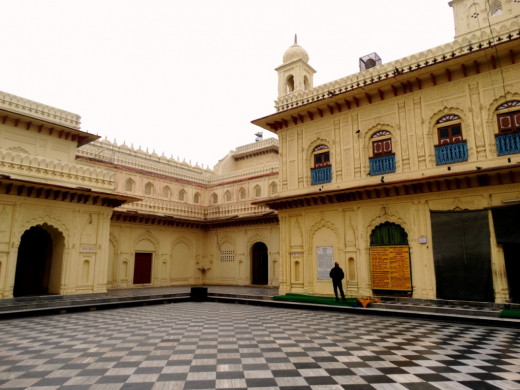
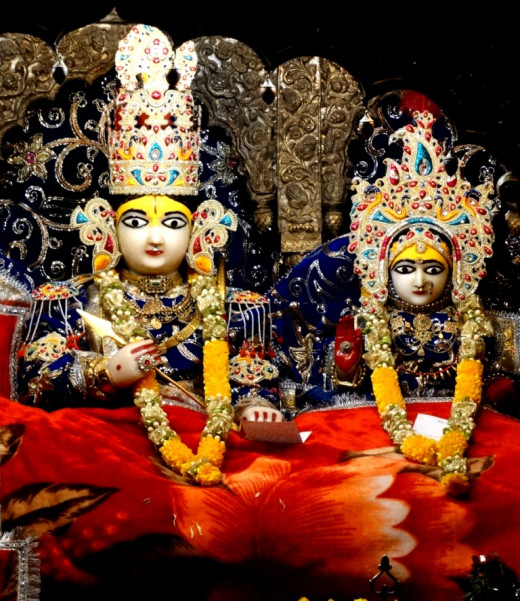
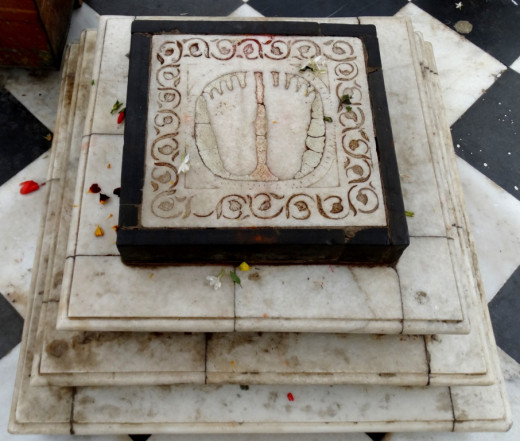
Bada Asthan, Ayodhya
This is also known as Chakravarti Maharaj Dasharath Mahal (Palace of King Dasharath, the father of Lord Rama). It is believed that King Dasharath used to stay here with his kith & kin. The entry is through a huge colourfully decorated gate. Inside, there are several temples, including the main one with idols of Lord Rama & Sita Devi with three brothers of Lord Rama.
Badaa Asthan, Ayodhya
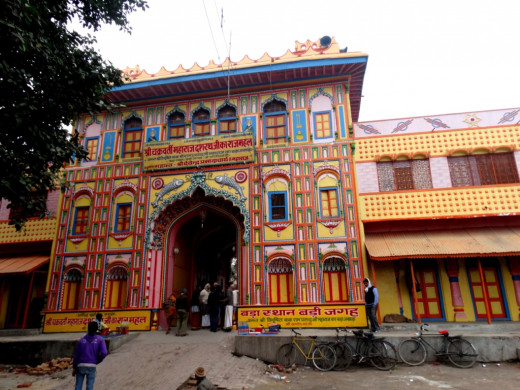
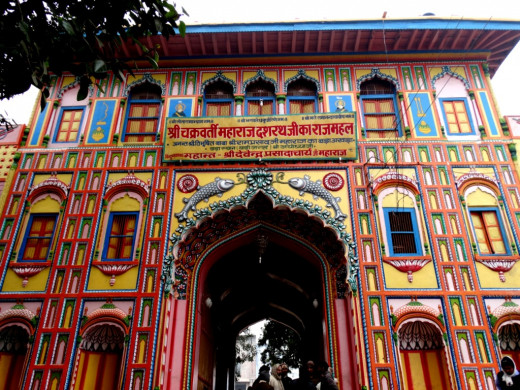
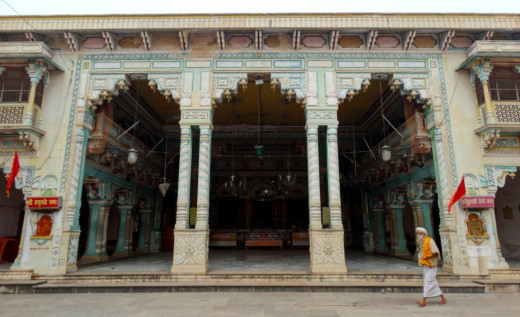
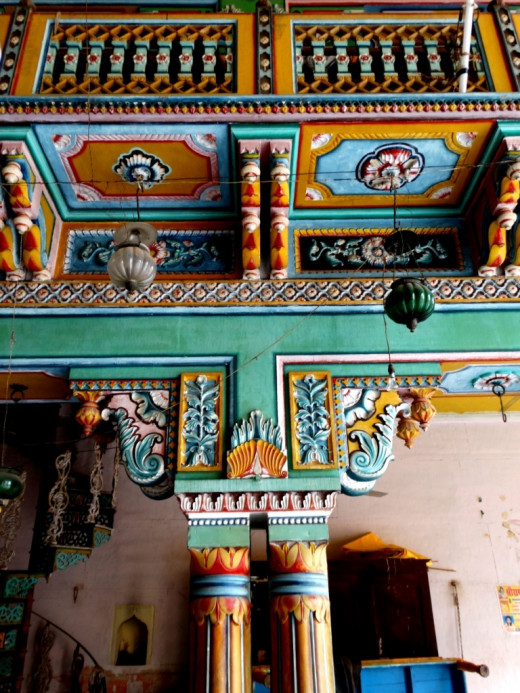
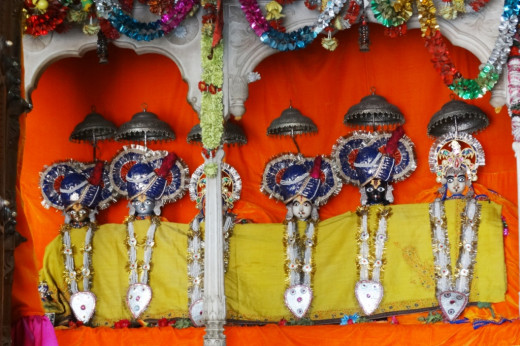
Kaleram ka Mandir (The temple of Kaleram or Black Rama)
A small temple situated in a narrow street behind the Nageswarnath Shiva temple at Ram Ki Paudi, this temple houses a small idol of Lord Rama made of black stone. Just in front of this is the temple dedicated to Gore Ram (White Rama).
Kaleram Temple
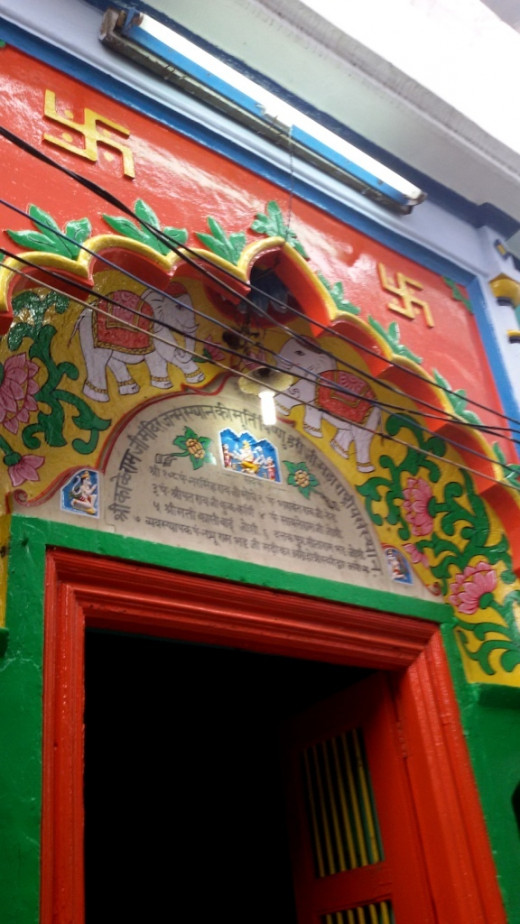
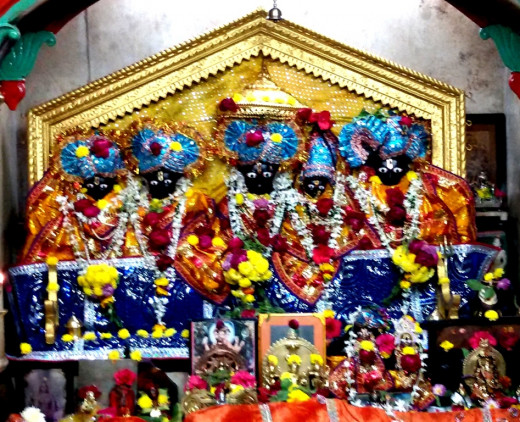
Nageswarnath Shiva temple
Amidst the many temples dedicated to Lord Rama is this temple dedicated to Lord Shiva known at this temple as Nageswarnath. It is believed that this ancient temple was initially constructed by Kush, son of Lord Rama.
Nageswarnath Shiva, Ayodhya
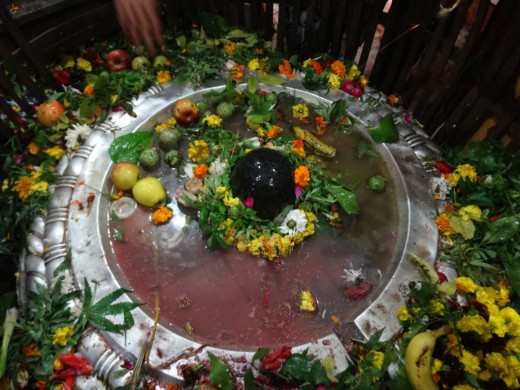
Ram Ki Paudi, Ayodhya
Also known as Swargdwar (Gateway to Heaven), this is a beautiful place where along a water channel connected to the river Sarayu several Ghats (bathing areas) are constructed. The whole length of the water channel is lined with red sandstone tiles. On one bank there are temples in rows, while parks are created along the other bank. It is believed that the last rites of Lord Rama were performed here after his death by drowning (Jal Samadhi ) in another portion of the Sarayu river, known now as Guptar Ghat, situated in present day Faizabad. The place has a serene ambience.
There are several small temples dedicated to the River Goddess Sarayu, mostly situated on the bank of Sarayu in Ram Ki Paudi area.
Ram-ki-Paudi
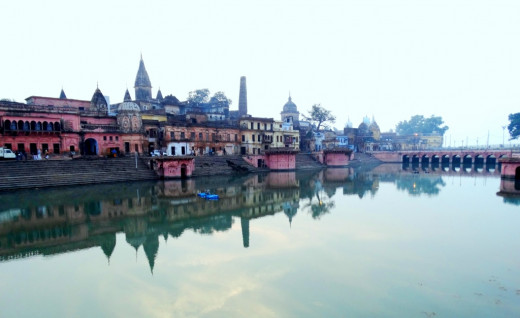
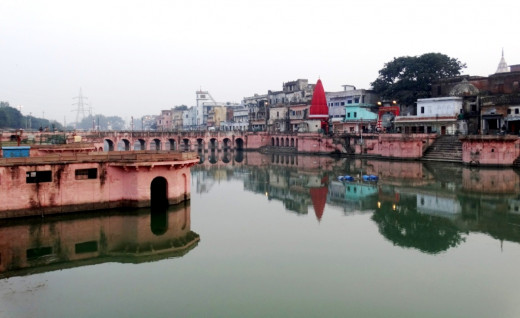
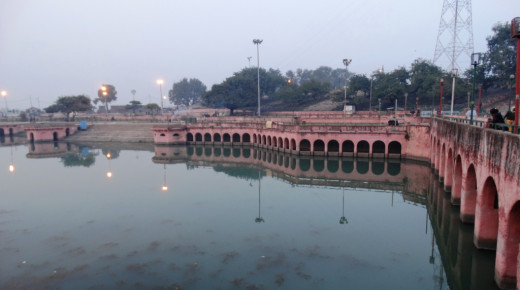
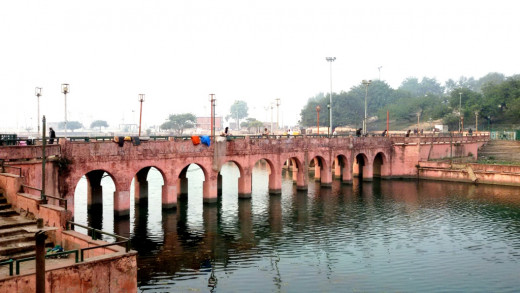
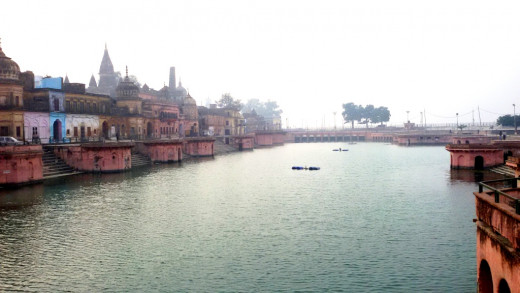
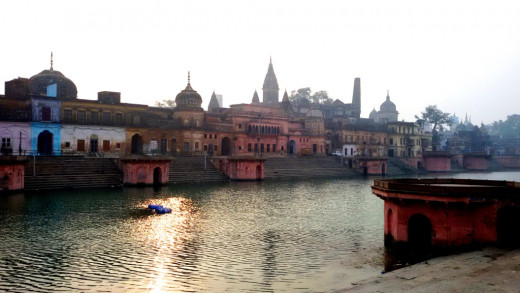
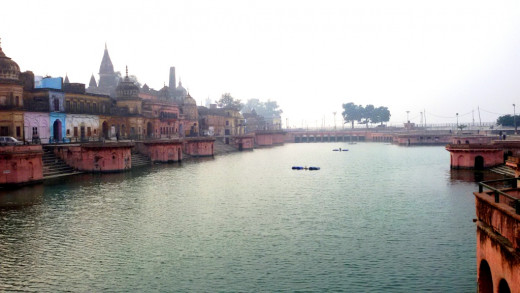
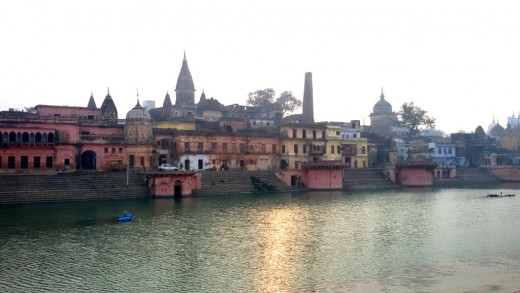
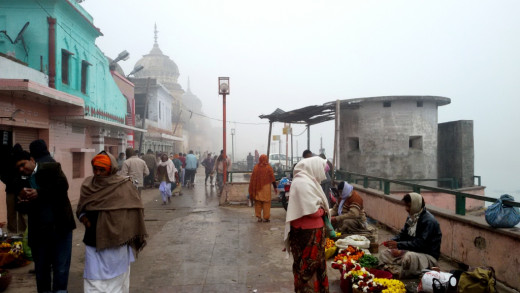
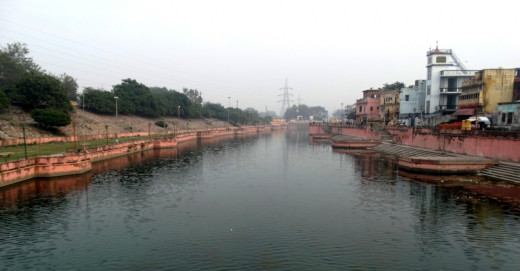
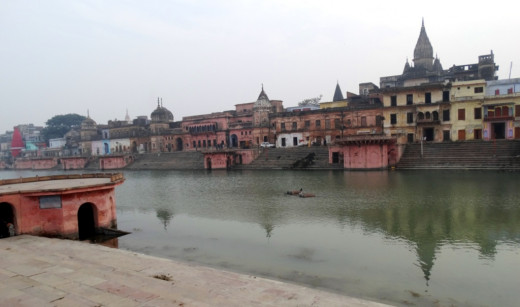
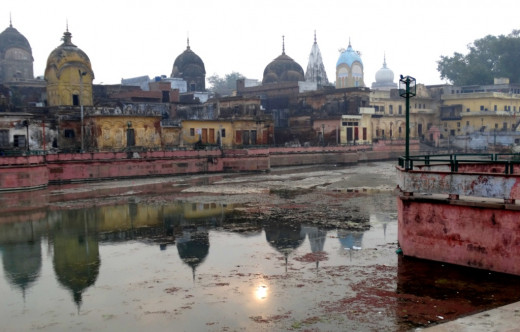
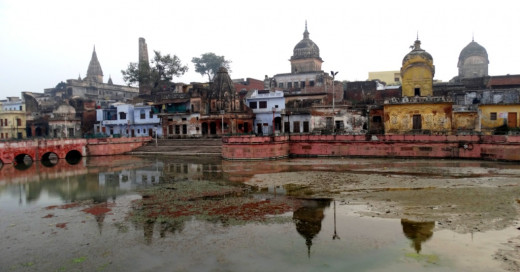
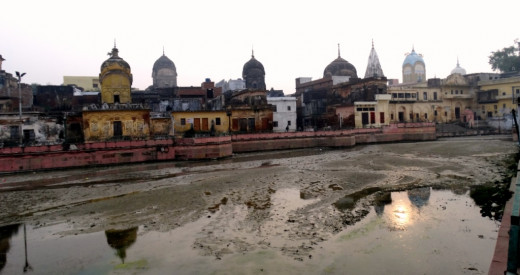
Moni Parvat, Ayodhya
This is a forest covered low hill a little away from the city of Ayodhya. It is so called (Moni = Gems; Parvat = mountain) because it is believed that all the gems brought by Sita as her dowry was stored up here, & the piled up gems created this hill. At prsent, there is a small temple on top, housing the idol of Moni Devata (The God of Gem) along with idols of Ram, Sita & Lakshman.
There is a second story about this hill saying that while Hanuman was carrying the Gandhamadan hill to Lanka during the war with Ravana, a portion of the hill fell here, creating the present day Moni Parvat.
One can get a good panoramic view of the city from the top of this hill.
Moni Parvat, Ayodhya
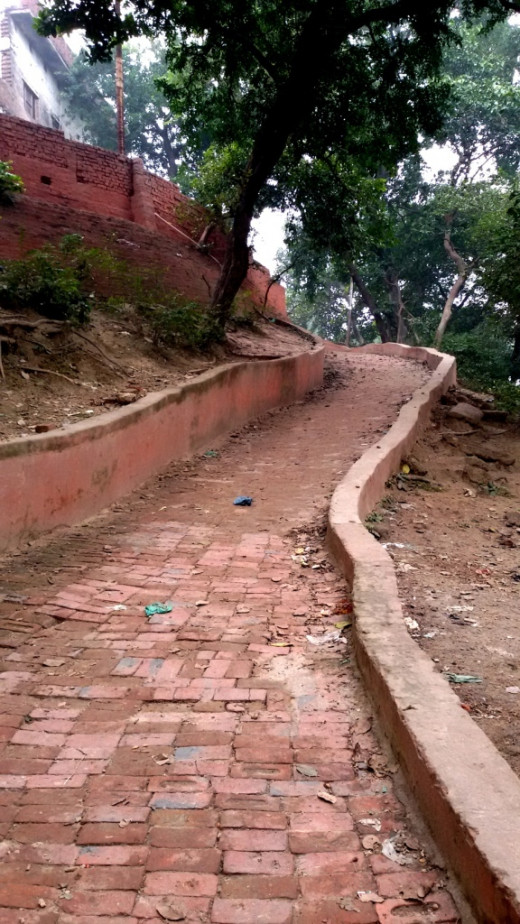
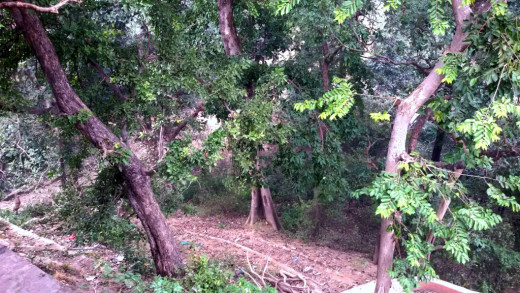
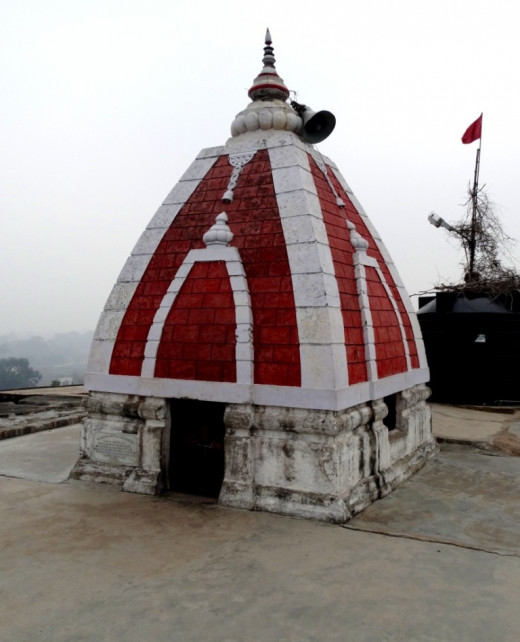
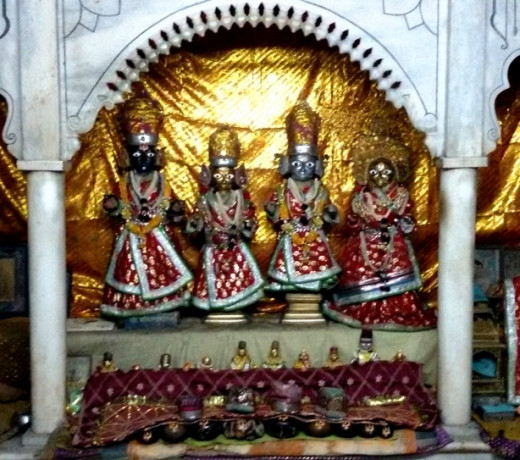
Sarayu River
The Sarayu forms at the confluence of the Karnali (or Ghaghara) & Mahakali (or Sharda) in Bahraich district of the Indian state of Uttarakhand & joins the Ganga in Uttar Pradesh.
Considered sacred by the Hindus, this river, a tributary of the great & holy river Ganga, flows by the side of the twin city of Ayodhya –Faizabad. There are two bridges over this river at Ayodhya, one a road bridge, while the other is a Railway bridge. The bank of the river has several ghats (bathing areas) for ritualistic bath. Religious activities of various kinds are performed here throughout the day.
Sarayu River
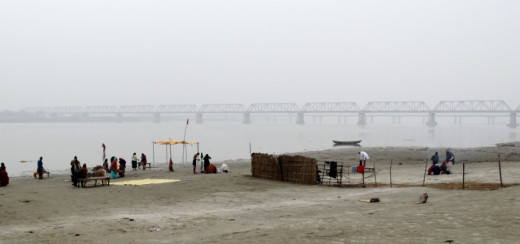
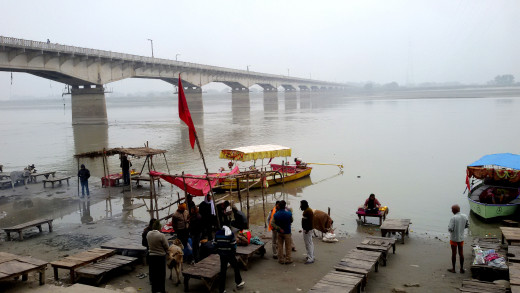
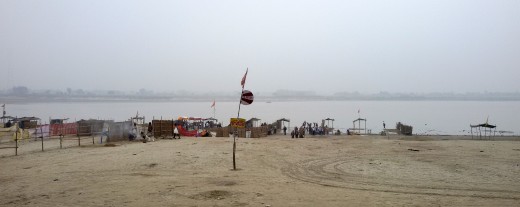
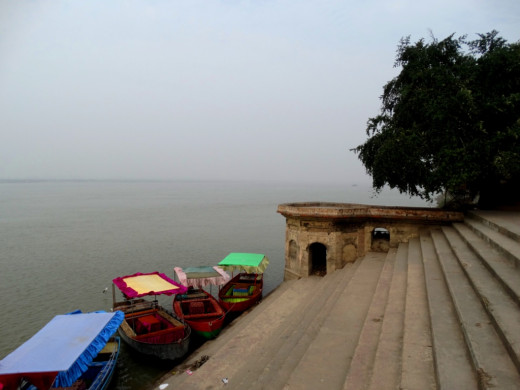
Places of interest near Ayodhya
Surya Kund
Situated few kilometres from Ayodhya, this is a large pond decorated with several stone-lined ghats. There are several temples here, the notable being the temple dedicated to Suryanarayan (The Sun God) & Kundeswar Shiva. According to the mythology, it is the place where King Dasharath was cured of Leprosy after a dip in this pond. Even today, lots of devotees take holy dip here on several occasions.
Nandigram
Situated about 20 km from Ayodhya, this is a quiet scenic village where Bharat, the younger brother of Rama spent long 14 years in penance & in running the governance of the Kingdom of Koshal in the name of Lord Rama while the latter was in exile. There are several temples here depicting the place where Bharat kept the shoes of Lord Rama on a throne (in lieu of Lord Himself) & the place where Hanuman met Bharat while Lord Rama was returning to Ayodhya after defeating Ravana.
There is also a large pond, called Bharat Kund, believed to be used by Bharat while he stayed here.
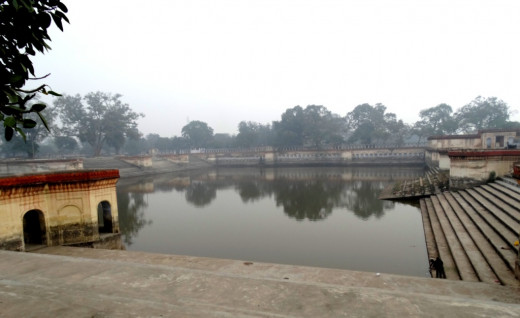
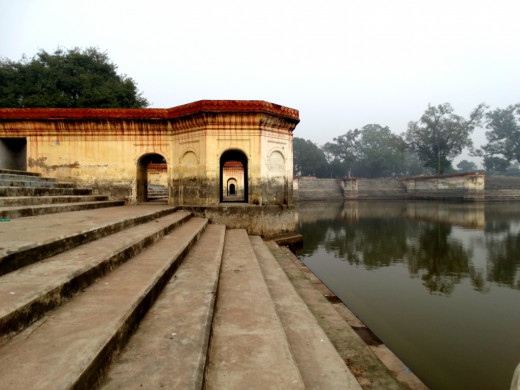
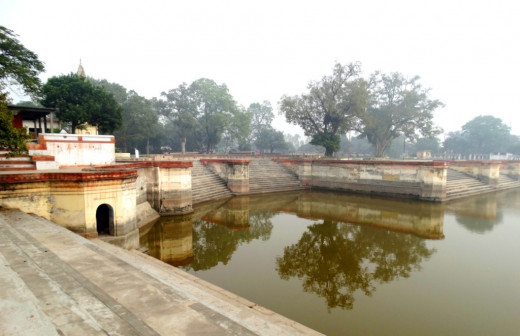
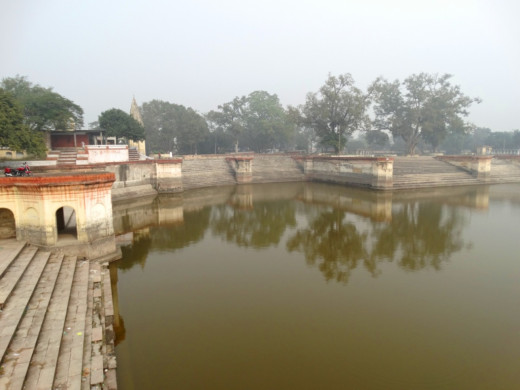
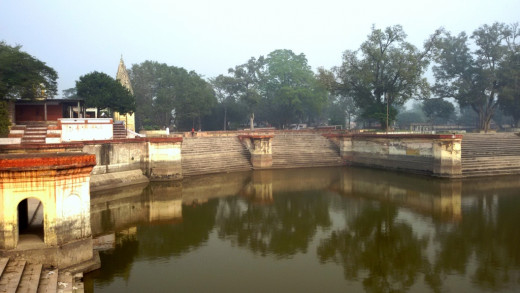
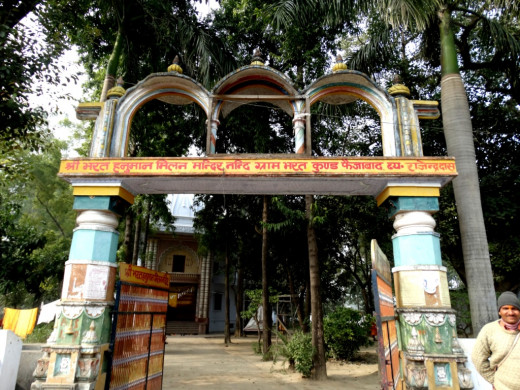
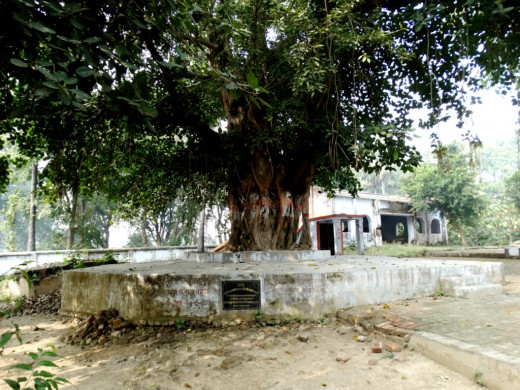
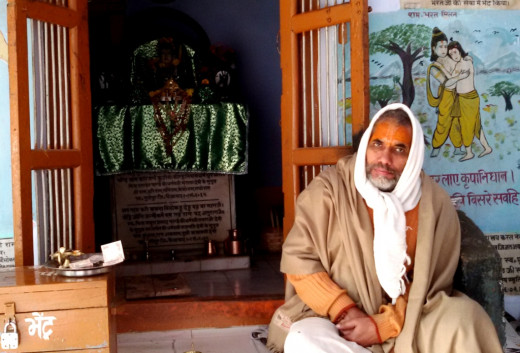
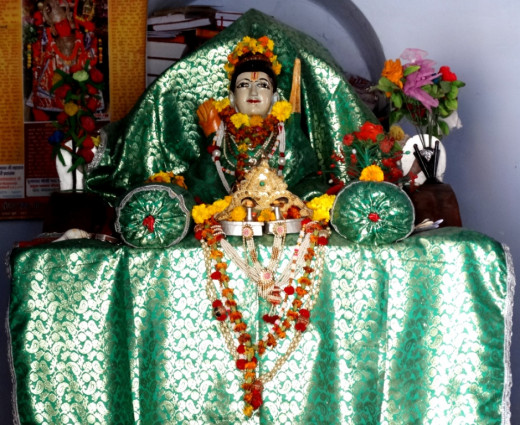
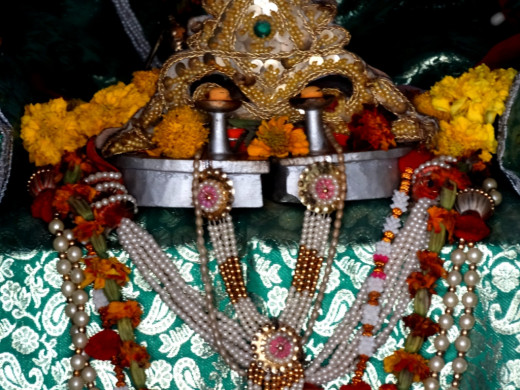
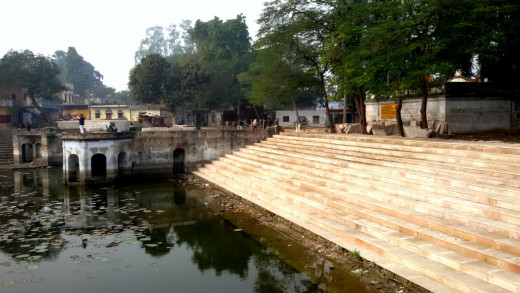
Places of interest of other religions at Ayodhya
There are several Jain temples & Sikh Gurdwaras here. The temples of first Jain Tirthankar Rishavdev or Adinath is situated near Ram ki Paudi. The Gurdwaras at Bramhakund & Nazarbagh areas are associated with Guru Nank-ji & other Sikh Gurus.
Ayodhya : Conclusion
Ayodhya is one of such places which tell a story at every step a visitor takes. As the sun sets behind the majestic temples, & diyas (earthen lamps) are lighted in the bank of Sarayu, one feels as if transported to a distant bygone era, when Lord Rama walked on this holy land.
Whether a devotee or a general tourist, the attraction of Ayodhya is simply irresistible.
